- Paro, Bhutan
- 17,843 miles flown + a lot of windy roads driven
- Temp: 60 deg
- 3 books read, 8 massages + 2 hot stone baths in the books
- Days 22-24

We drove into Paro around sunset and stopped to take a picture of the Rinpung Dzong fortress lit up with spotlights as the sky started to darken. As we drove a little further and walked into our hotel, the Zhiwa Ling (meaning place of peace), we couldn’t believe the ornate beauty of the place we’d be spending the next three nights. It’s been named one of National Geographic’s Unique Lodges of the World and I can see why. Wow.



The big hike was upon us, the one we’d been training for as we touched the clouds in Thimphu. We were here. Our destination was there, 10K ft up. The expectation was that it would take us 5-6 hours, so we planned an early start at 7:30am to avoid some of the hot midday sun and the crowds (this hike is one of the main tourist attractions so we weren’t going to have the place to ourselves this time.)
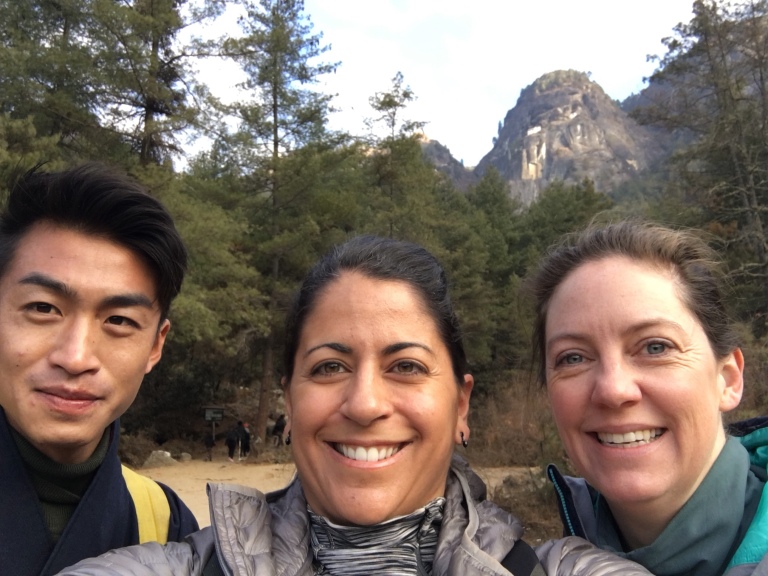
The path up was steeper than the previous hikes and also didn’t have the benefit of tree cover. By 7:31 we were already peeling off the layers.

One of the most remarkable things we noticed as we hiked along other groups was the number of families making the trek with 3-4 kids in tow, some as young as infants held in their father’s arms for the journey. No complaining from me about putting one foot in front of the other.

At every turn Tiger’s Nest got a little bit closer and a little bit bigger in our viewfinder. How does one resist the urge to take 1,000 photos of the same thing as your sense of awe grows with each step?

The cruelty of the hike? After making it up the long, steep path, you then have to climb 423 steps down and back up to cross to the opposite side of the cliffs to reach Tiger’s Nest. If this were easy, there would be no sense struggle, and therefore, no sense of accomplishment. That’s the purpose of this journey, right?

Tiger’s Nest is one of the most sacred monasteries in Bhutan. It was first built in 1692, around the Taktsang cave where Guru Rinpoche is said to have flown to on the back of a Tigress from Tibet. He then meditated for three years, three months, three weeks, three days and three hours in the 8th century. Guru Rinpoche is also credited with introducing Buddhism to Bhutan. One has to wonder how something so spectacular was built so far up on a cliff with no roads, no cleared paths, no modern way of getting supplies there.
Side note: A weird thing happened starting from when we left Bangkok on an extremely early morning flight to Bhutan. I had looked at the clock on my phone and it read 3:33. I didn’t think much of it. The next two afternoons I happened to look at my phone in the afternoon at exactly 3:33pm both days. It stuck in my mind simply as a weird coincidence of seeing the clock when it was all 3s. And then the night before we were set to make the hike to Tiger’s Nest we pulled up the Wikipedia page to learn more about this legendary monastery prior to the hike. That’s when we ready about his mediation for 3 years, 3 months, 3 weeks, 3 days, 3 hours. Weird coincidence or something more at work here?
We spent an hour up at the top visiting two temples, doing our prayer prostrations, meditating, being still with our thoughts. Before leaving we made ourselves into crouching tigers and climbed into the nest/cave. The crawl space to the nest is no wider than your body and involves climbing down two very precarious ladders teetering on the rocks with rungs half as wide as your foot. It’s a test in balance and patience and definitely added to the experience.

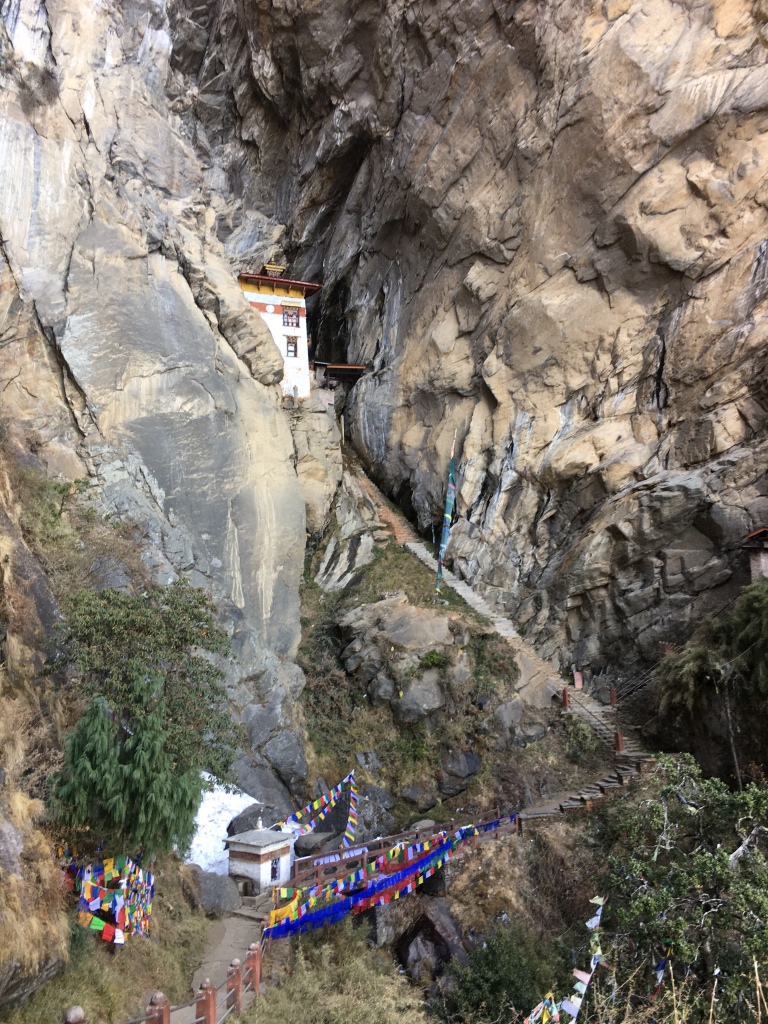
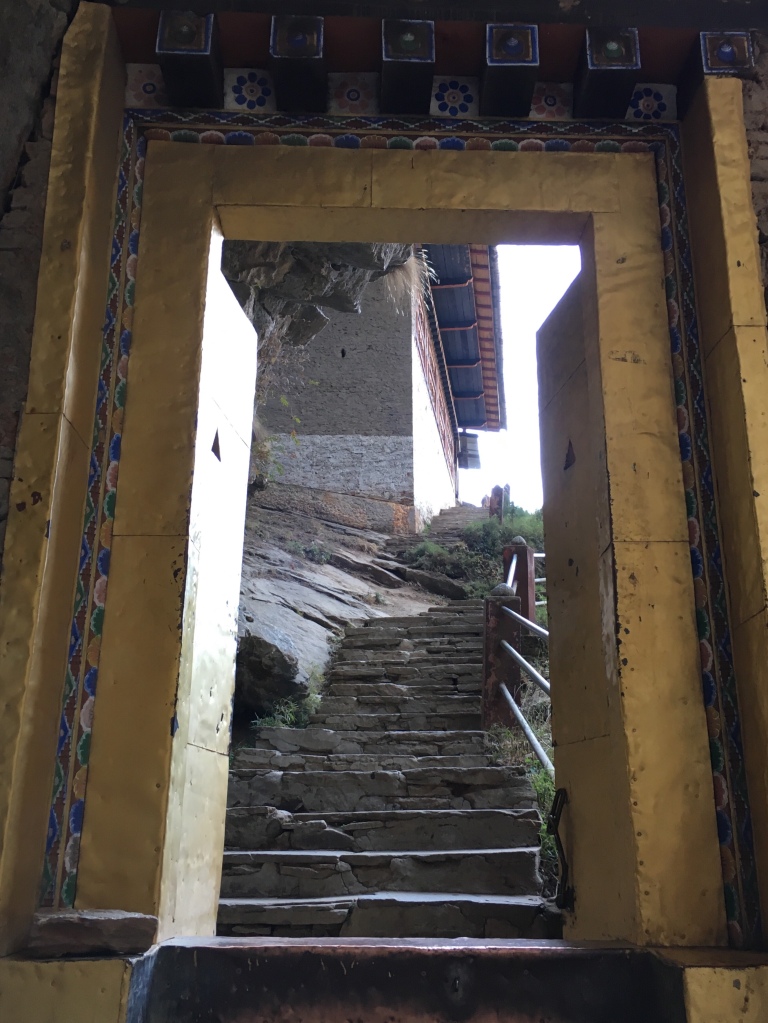
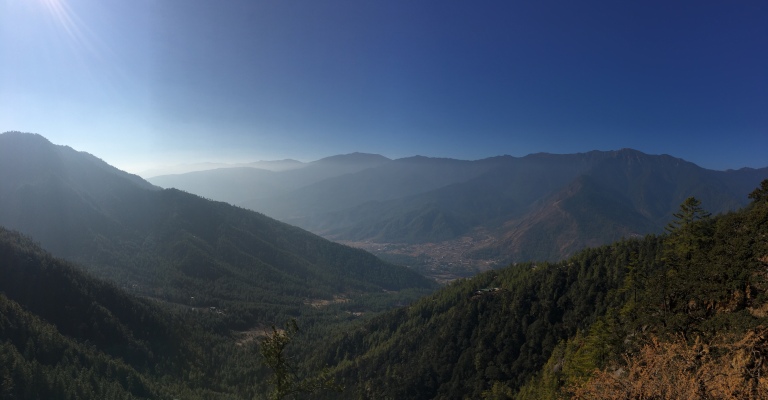

Going back down you’re struck by how far you’ve come. On the way up, you’re fiercely focused on the climb while trying to also take in the views around you, that you hardly notice time or distance pass. Not the case on the return trip. You become acutely aware of how far you traveled, not only by the count of the steps you’ve taken, but also by the struggling faces staring back at you as they can hardly put another foot in front of the other. There’s a look of “really, you’re already on your way back?” Or “please tell me it’s not much further.” We even got a questions of disbelief “did you actually make it all they way to the top?” We did. We made it. And it was glorious. It was everything you want it to be. A challenge, a spiritual journey, a series of photographical moments, a memory that can’t be photographed or described with words, and a hike that got our boots dusty. It was all of those things.


What does one do in Bhutan after a big hike? First we ate, of course, then we treated ourselves to a massage (notice again the hand-painted cloud motif on the wall of the massage room) and hot stone bath that evening. Hot stone bath you ask? Traditional to Bhutan, it’s a process whereby they heat mineral rich rocks over a scorching fire for three hours until they’re red hot, then submerge them in a tub of water filled with local herbs to effectively create a hot tub with restorative properties.

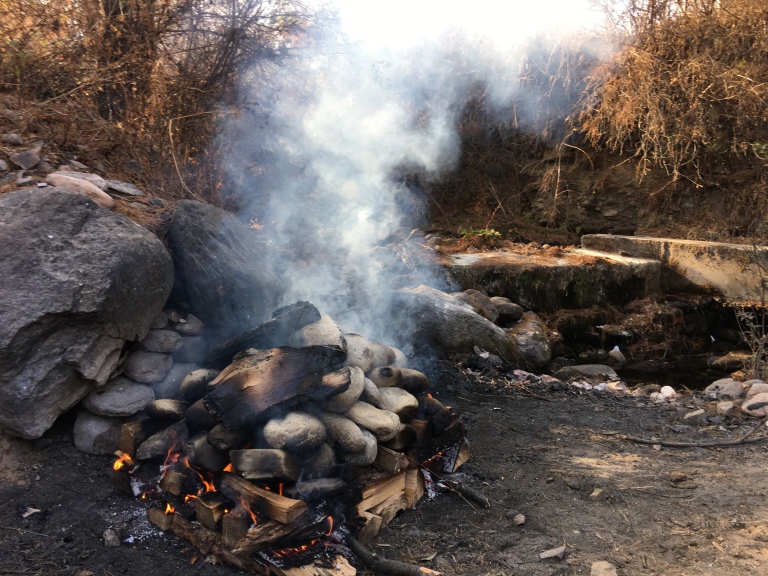
We planned our bath for 6pm when the sun had gone down, the stars and moon had come out and the only sounds to distract us were howling dogs in the distance (not quite as relaxing.) The cool night air kept our wine chilled, while the spa staff checked periodically if we wanted more stones as the water cooled also. A nod of yes sent a man wheeling over with red hot rocks in a wheel barrel and a big metal claw to drop them in one at a time. As they hit the water a sizzling hiss is released and boiling bubbles rumble near your toes on the other side of the partition. OMG this is amazing.
As we marveled at our natural hot stone bath, sipped wine and tilted our heads back to watch the satellites roll by in the starry sky, we reflected on our time in Bhutan. Our favorite things (all of it). Things we would change (none of it). What we would do again on our next visit (yes, we’re coming back soon, and our immediate response was simple to see more of the country.) Bhutan is magical. I’ve said it before and I’ll say it again, it’s unlike any place I’ve visited in all the best ways.
We spent our final day with Jigme and Chencho without a hike on the agenda. Instead we leisurely made our way around Paro visiting more 7th century temples, capturing more sweeping views of the valley and passing through the famous Rinpung Dzong fortress that we took a photo of on our drive into town.

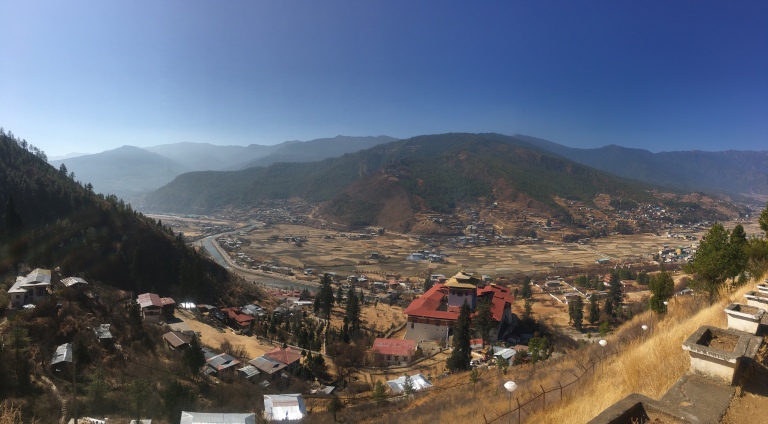


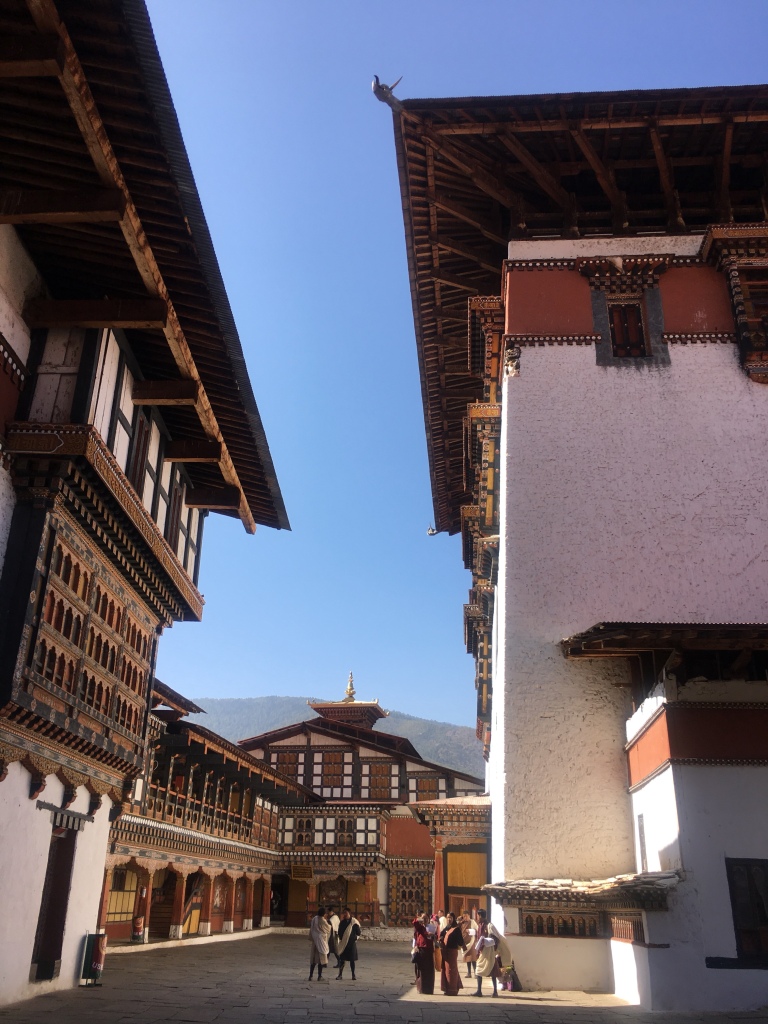




The only way to end our five days in Bhutan was with a cold Bhutanese Druk Lager, a spin of the prayer wheels, and a quiet stroll back to our hotel through the rice paddies.


One of my favorite paintings we saw repeatedly in the temples is called “Four Friends.” It depicts the story of four animals working harmoniously to reach the fruit on the tree to feed each other–the elephant, the monkey, the rabbit and the bird. The legend of the story is the bird sowed the seed, the rabbit watered it, the monkey fertilized it, and as the tree grew tall, the elephant protected it. The four of us spent five days together, all with different backgrounds, but in complete, beautiful harmony. We will remember our time together and I’m certain we will stay in touch until we come together again either on our return to Bhutan, or perhaps on a visit from our new friends to our side of the world.

Goodbye Bhutan, we love you.
Xo, xt
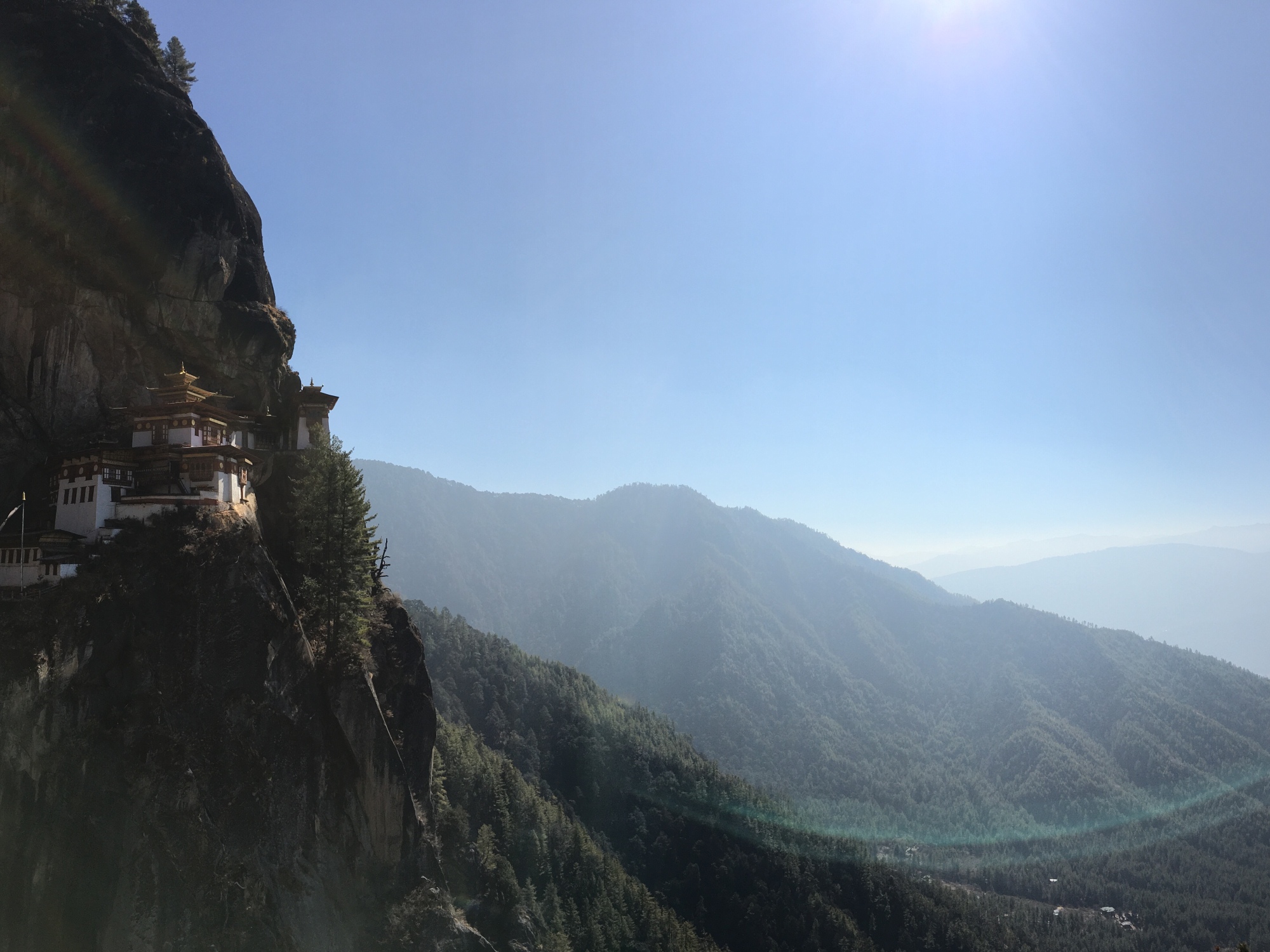
What beauty!!!! Again I say WOW !!!!!!
xxxooo
LikeLike
What a great trip and what beautiful sites and adventures. Enjoy and don’t wear yourselves out. Eastern Europe will be easier to get around. Keep your stories coming.
Love you!!!
Dad
LikeLike
Your photos are INCREDIBLE and now I desperately want to go to Bhutan. Glad you are having a good time and thank you for sharing all your photos and beautifully written insights! It really looks like an amazing journey…
LikeLike